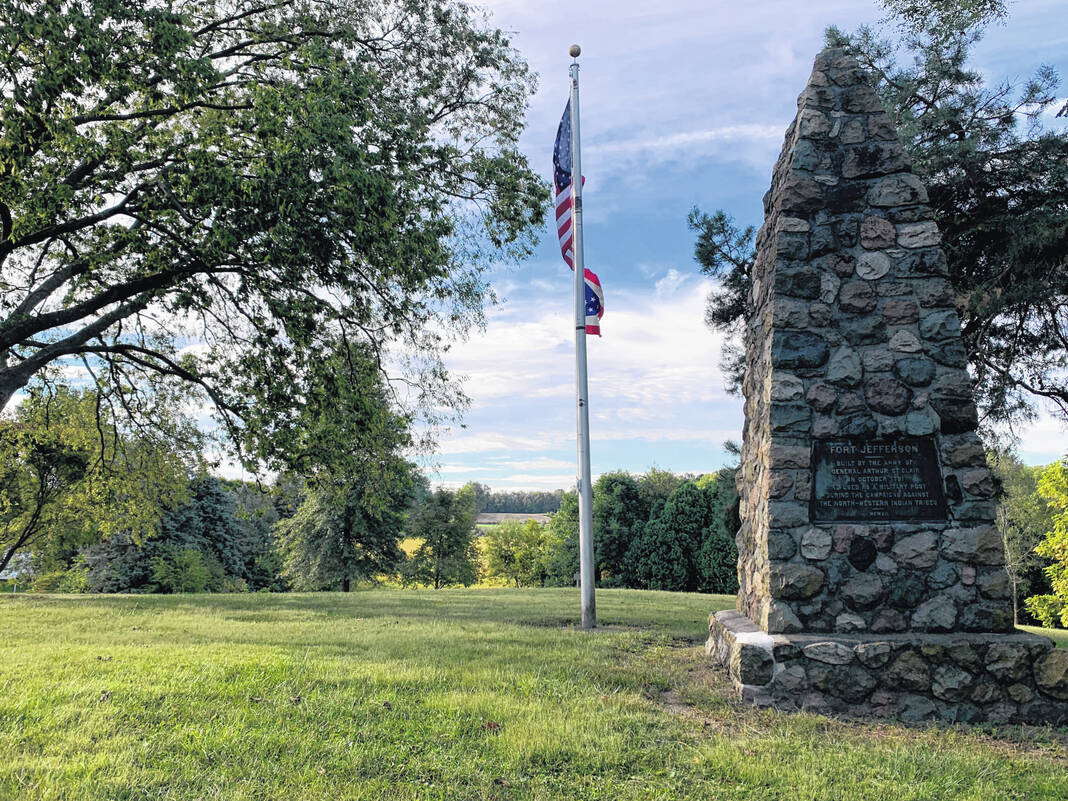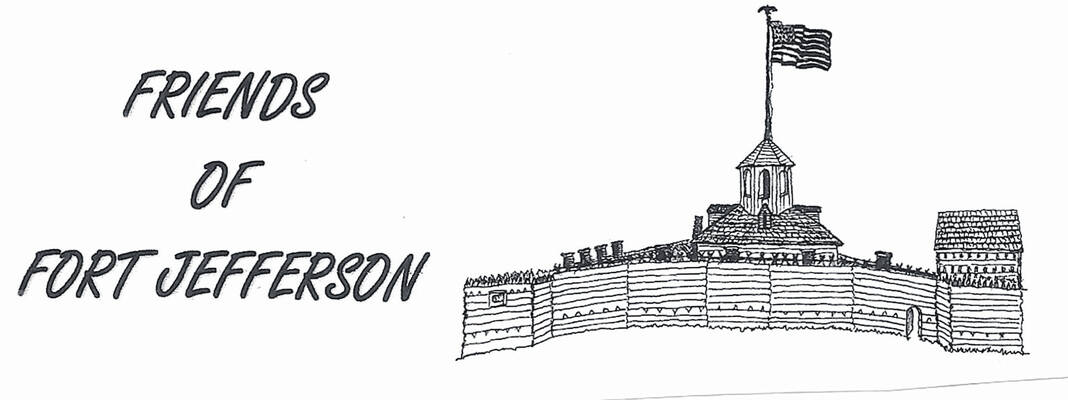
Because the end of the Revolutionary War wasn’t competely over until after the War of 1812, which means Fort Jefferson played a role in America’s independence.

GREENVILLE — In 1790, the United States was in its infancy. The rest of the world questioned whether this new nation for the people and by the people would succeed. Britain, Spain, and France were waiting in the wings to divide this new continent if the U.S. failed with their newly formed government.
The 1783 Peace Treaty of Paris did not take into consideration the indigenous people of America, consequently, the rightful owners of the Northwest Territory were not represented at the treaty.
Britain agreed to relinquish all lands up to the Mississippi River to the United States. It is no surprise that the Native Americans did not agree with that. Also, the British did not abandon their forts in the Great Lakes area as they had agreed, and the United States did not pay reparations to the British which was also agreed to in the Treaty of Paris. As it would turn out, the Revolutionary War was not yet over.
Settlers began to claim land north of the Ohio River. They were harassed and viscously attacked by Native people who were protecting their rites and fighting on principles. As a result, President Washington and Congress made the decision to protect the settlers. Four separate individual armies were formed in seven years between 1790-1796 to force a solution with the Indians. At the time, there was no standing army of the United States and the federal military consisted of 80-90 men guarding the weapons left over from the Revolutionary War. Defense of the U.S. had been left up to each state’s militia.
The first army was General Harmar’s in 1790. He enlisted men anyway he could, and many had no training or discipline. His army was ambushed where Ft. Wayne stands today. They suffered many casualties and returned defeated. The second army, General St. Clair’s, was formed in 1791 and his army also lacked training, discipline, equipment, supplies, and clear purpose of duty. Officers bickered and men deserted. The outcome was the United States worst defeat ever inflicted on them by the Indians at the site where Ft. Recovery would later be built.
George Washington and Congress realized that if the United States could not contain the problems within their own country with the Native Americans, the United States would not be taken seriously in Europe and around the world.
Washington then gave General Anthony Wayne strict orders that “Failure was not an option.” Wayne formed a Legion, the third army to engage the Ohio Indians, but refused to start his 1793 campaign until all the men were fully equipped, trained, and had discipline. He drilled the men with muskets loaded with buck and ball loads and each musket was to have a bayonet. Wayne believed the bayonet charge would win the battle. He was prepared and knew the Indians would try to flank the U.S. army. Wayne had a strategy to outflank the Indians. He was victorious and could finally convince the Natives from a position of strength to discuss a treaty.
The Treaty of Greene Ville was signed and contributed to a temporary peace.
President Washington and Congress realized why Wayne succeeded where the other armies had failed. One year after the Greene Ville treaty, congress voted to disband the Wayne’s Legionary Army and form a permanent standing Regimental Army. This fourth new army would be trained and equipped and ready to fight without the problems of recruiting and supplying. Wayne completed this task on 1 November 1796. The Revolutionary War, phase 2, continued since the British still maintained forts they had agreed to abandon, and they continued to support Indians in their fight to retain Indian land.
Let us not forget the important early role Ohio played in the makeup of the United States. The one place that experienced the cause and effect of all four armies is Fort Jefferson. Someday it could be considered ”common ground” on which to tell the whole truth of how the western frontier was won. The Friends of Fort Jefferson purchased an additional 17 acres of Ft. Jefferson grounds with that intention. (Note: Ft. Jefferson was built in 1791 by Arthur St. Clair. After the defeat of his army at the Wabash, Ft. Jefferson was left with around two hundred men, deep in Indian territory, to maintain the fort. Two years later Ft. Jefferson received protection from the siege of lndians. That is when Anthony Wayne’s army built Greene Ville in 1793 six miles in advance.)
Too many historically incorrect documentaries are producing fallacies that need to be corrected. The 250th anniversary of the signing of the Declaration of Independence gives us a perfect opportunity to make these corrections.
The Revolutionary War was not completely over until the War of 1812 was resolved.
Friends of Fort Jefferson

